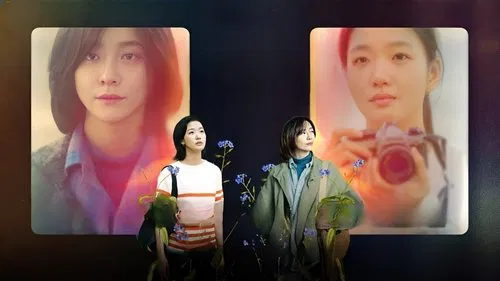**“You and Everything Else” — A Drama of Silence, Stares, and Scars**
---
**Part 1: A Drama Without Fireworks, Yet Burning Inside**
K-dramas have, for years, been synonymous with intensity. Intensity of love, intensity of action, intensity of spectacle. Whether it’s a heart-stopping car chase through neon-lit Seoul, an aching love story that spans lifetimes, or a cliffhanger twist that turns fandoms upside down, we’ve been trained to expect K-dramas to dazzle. Yet in early 2025, a quiet storm arrived on our screens: You and Everything Else.
This 15-episode series did not dazzle with spectacle. There were no gang fights in dark alleys, no romantic kisses against the backdrop of cherry blossoms, no celebrity cameos or glossy glamour to boost ratings. Instead, what we were given was two women — two actresses standing on the bare stage of life, armed with nothing but their eyes, their silences, and their capacity to wound and to heal.
And against all odds, that was enough.
**An Unlikely Premise**
Before You and Everything Else aired, skeptics were many. The marketing itself seemed almost defiant: no explosions, no glossy posters of shirtless leads or tear-soaked lovers. Just two women’s faces, partially lit, staring not at the camera but at each other. Was this really a K-drama? Could such restraint survive in an industry that thrives on excess?
Fifteen weeks later, the answer was clear. The gamble had paid off. By the finale, viewers were not only still watching — they were whispering that this might just be one of the most profound dramas of the decade.
**Two Lives, Two Shadows**
The story begins with Eun-jung, a woman who seems, at first glance, unshakable. She walks with the cool poise of someone who has weathered storms and emerged stronger. Yet her composure is a mask, and behind it lie scars she does not name, wounds she has grown so used to hiding that she no longer knows where survival ends and denial begins.
Then comes Sang-yeon. She is the opposite: all laughter, quick jokes, a smile that makes everyone think she is fine. But her brightness is camouflage. Her past is darker than she allows the world to see. She too is carrying injuries, though hers are wrapped in an armor of cheer.
When these two women meet, the drama does not explode — it unfolds. Slowly, inexorably, like dawn light creeping through closed blinds. They become each other’s mirrors. Each encounter forces them to confront the unspoken truths of their lives: how easily people hurt each other, how deeply those wounds linger, and how much of our daily existence is about concealing that pain just to carry on.
**Acting That Breathes**
At the heart of You and Everything Else lies a radical idea: what if a drama could survive almost entirely on acting? Not just the recitation of dialogue, but the smallest tremors of expression.
So the camera lingers. It lingers on Eun-jung’s lips trembling when she suppresses words. It lingers on Sang-yeon’s eyes, shining with unshed tears that never quite fall. It lingers on their silences — the kind of silences that feel louder than screaming.
In a lesser drama, this approach might have collapsed under its own weight. But here, the two lead actresses delivered what can only be called performances of a lifetime. With nothing but micro-expressions and long gazes, they carried entire episodes. Viewers found themselves holding their breath, waiting for the flicker of an eyelid or the tightening of a jawline that would reveal everything.
This was not acting for applause. It was acting as lived reality.
**The Courage of Restraint**
Television has conditioned us to expect crescendos. But You and Everything Else dared to do the opposite. Scenes stretched in real time. Conversations broke off into silence. Moments of vulnerability played out without a musical swell to tell us how to feel.
At first, some viewers resisted. Social media buzzed with comments like, “Is anything even happening?” Yet by mid-season, the tone had shifted. Fans were describing the show as “mesmerizing,” “unbearably honest,” “a mirror of my own life.”
Because in truth, life rarely gives us neat crescendos. Life is mostly fragments, pauses, glances, wounds hidden under routine. By embracing restraint, the drama achieved what more flamboyant series rarely do: authenticity.
**A 15+ Hours of Meditation**
Watching You and Everything Else was less like binging a K-drama and more like sitting through a meditation. It demanded patience. It demanded attention. But in return, it gave something deeper: the quiet recognition that every human being you meet is hiding something, carrying something, enduring something.
By the time the finale aired, viewers were left not with a sense of catharsis, but with reflection. What scars do I hide? What scars have I given to others? And who, in my life, has quietly stood as my Eun-jung or Sang-yeon?
https://youtu.be/5lAgViuzNXg?si=1LDgAbhVeQB7EXG-&t=319#BTS #Blackpink #TWICE #IVE #WhenLifeGivesYouTangerines #YouAndEverythingElse #KDrama2025 #BestKDrama #HealingDrama #MinimalistStorytelling #KDramaMasterpiece #GlobalKDrama
